The Anunnaki and Their Relationship With Dragon Legends.

David Vaughan Icke is a British writer and speaker. Since 1990 he has been searching for “who/who controls the world” and writing controversial books and articles. Icke has been a reporter, sportscaster, and spokesperson for the UK Green Party. He is also the author of more than twenty books, in which he explains his points of view together with the results of his investigations on different topics, mainly referring to the supposed world control by a few human beings and with special emphasis on the Illuminati, mostly tycoons and members of different royalty, acting together with extraterrestrial beings, which would have been exercising their domination over humanity since its dawn. According to Icke, there is a hidden force that controls humanity. He calls them the Illuminati, although he acknowledges that it is an unnamed secret society, which could be based on the so-called Brotherhood of the Serpent or Brotherhood of Babylon. This secret society or “men in the shadows” have an agenda whose main objective is the establishment of a fascist world government; a dictatorship controlled by world elites, very much in line with what George Orwell described in his novel 1984. This world elite is made up of several powerful families, within which Icke positions the Bushes, the Rockefellers, the Rothschilds and the Royal of England, among others. He further argues that they all have the same bloodline, which has spread throughout the world’s aristocracies from the kings of Sumer to the present day. I have based, in large part, on his book “The Biggest Secret” to write this article.
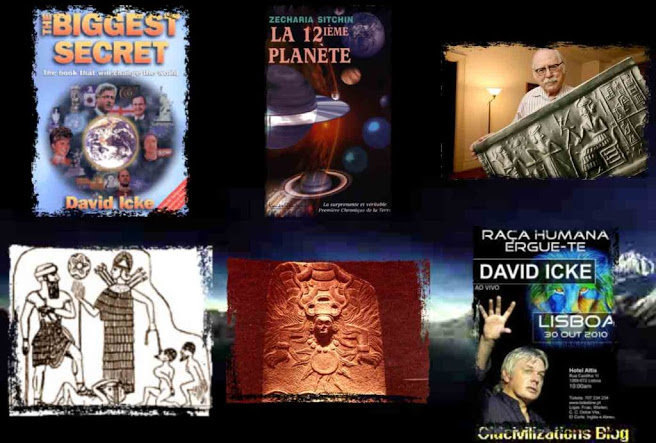
According to Zecharia Sitchin, the Anunnaki were extraterrestrial beings who arrived on planet Earth 445,000 years ago with a clear purpose: to obtain gold. Apparently, they needed this mineral to restore their atmosphere and protect themselves from ultraviolet rays. In Sumerian mythology, An or Anu, was the god of the sky, lord of the constellations, king of the gods, who lived with his wife, the goddess Ki, in the highest regions of the sky. It was believed that he had the power to judge those who had committed crimes, and that he had created the stars as soldiers to destroy the wicked. His attribute was the royal tiara. He was one of the oldest gods in the Sumerian pantheon, and was part of a triad of great gods, alongside Enlil, god of the air and atmosphere, and Enki, also known as Ea, god of the Earth. Anu was considered to be the father and first king of the gods. With the passage of time, the Igigi, crew members of the extraterrestrial ships around the Earth, mutinied and decided not to continue extracting gold, so Enki decided to create a new species to extract said mineral. He decided to extract an egg from a female Neanderthal, fertilized it with Anunnaki sperm, and reintroduced it into the Neanderthal. From this union some very primitive beings were born. In other words: they were not useful for the purpose for which they had been created. They then decided to repeat the process, but instead of reintroducing the egg into the Neanderthal female, they introduced it into an Anunnaki female. And it worked. From that union the human species arose and for thousands of years they were slaves to the Anunnaki, who ended up teaching them knowledge for survival and development. For Zecharia Sitchin, the Anunnaki intervention would explain why the known missing link in the human evolutionary chain has not been found. On the other hand, the British writer and lecturer David Icke argues that the Anunnaki continue to control us through governments and large fortunes. According to Icke, the Anunnaki of the Sumerian Tablets and the White Martians, proposed by Brian Desborough, would not be the same beings, although there could well be a genetic connection between them. Brian Desborough believes that the Earth was once much closer to the Sun than it is today and that Mars orbited around where the Earth orbits now. If, as is alleged, the deep canyons on the surface of Mars were caused by massive torrents of water, there must have been a warmer environment on Mars, because today it is so cold that the water would freeze in an instant and the atmosphere of almost empty would evaporate the water in an instant.
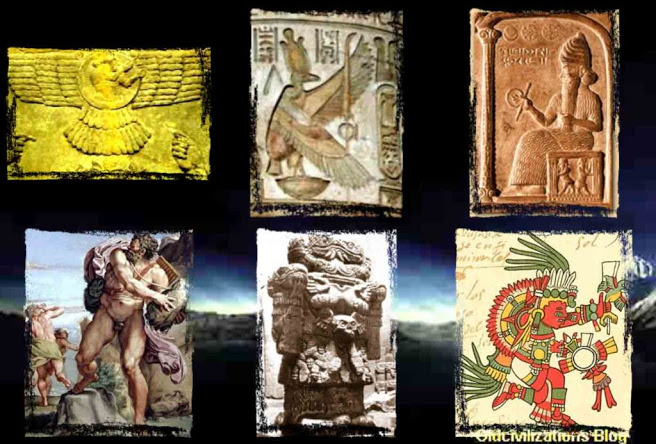
Desborough says that Earth’s closer proximity to the Sun meant that Earth’s first humans were black, with the right pigmentation to deal with the sun’s fiery rays. Ancient skeletons found near Stonehenge, England, and a Along the west coast of France, they show African-like characteristics. Desborough says that Mars, then with an environment very similar to ours, had a white race before the cataclysm of the planet Venus. His research has convinced him that White Martians built the pyramids that would have been recorded on Mars and went to war with an advanced black race with the goal of conquering Earth. These wars, he says, are the “wars of the gods” described in countless ancient texts, most notably the Hindu Vedas. Desborough adds that, after the cataclysm, the White Martians who had settled on Earth were left here without their technology and with their home planet devastated. These White Martians became the White Peoples of Earth. Some scientists claim that when white people are immersed in sensory deprivation tanks for long periods, their circadian rhythm has a frequency of 24 hours 40 minutes, which does not correspond to the rotational period of Earth, but of Mars. This is not the case with non-white races that are in harmony with the Earth’s rotation. In biology, circadian rhythms or biological rhythms are oscillations of biological variables at regular time intervals. All animals, plants, and probably all organisms show some kind of physiological rhythmic variation, which is usually associated with rhythmic environmental change. Different rhythms with periods ranging from fractions of a second to years have been documented in all eukaryotic organisms as well as many prokaryotes. Although they are modifiable by exogenous signals, these rhythms persist under laboratory conditions, even without external stimuli. The alteration in the sequence or order of these rhythms has a negative effect in the short term. Many travelers have experienced jet lag, with its symptoms of fatigue, disorientation, and insomnia. In addition to alcohol, some psychiatric and neurological disorders, such as bipolar disorder and some sleep disorders, are associated with irregular functioning of circadian rhythms in general, not only of the sleep-wake cycle.
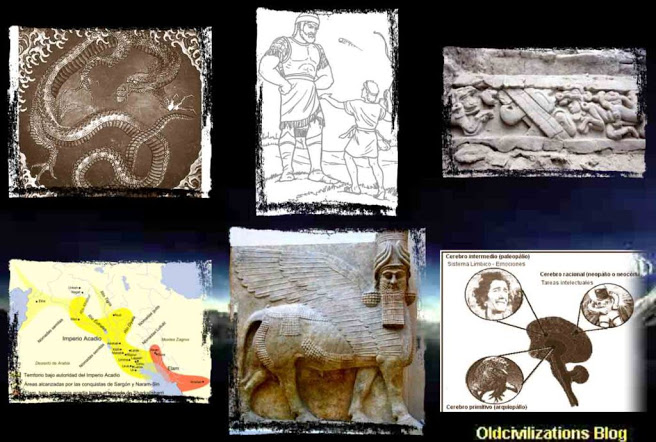
Long-term alteration of circadian rhythms would have adverse consequences in multiple systems, particularly in the development of exacerbations of cardiovascular diseases. The periodicity of some treatments, in coordination with the body clock, could significantly increase efficacy and decrease adverse reactions. Desborough believes that these White Martians were a highly advanced race in the ancient world, known as the Phoenicians or the Aryans. And they began a long process to return to their former technological power after the upheavals that destroyed and devastated the surface of their own planet. A white race, known as the Phoenicians and by other names, were probably the masterminds behind the Egyptian civilization, at least until 3,000 BC. C. The Giza Plateau, where the great pyramid was built, was formerly known as El-Kahira, a name derived from the Arabic, El-Kahir, from which the name Cairo comes, refers to Mars. Ancient texts reveal that the measurement of time was closely related to Mars, and March 15, the Ides of March (Mars), was a key date in their Mars-related calendar, as is October 26. The first commemorated the beginning of spring and the second was the end of the year in the Celtic calendar. The stories of the Holy Grail and King Arthur connect with this theme. Camelot apparently means City of Mars. The Earth is believed to have suffered major cataclysms during the period between 11,000 and 1,500 BC. C. The first cataclysm of 11,000 B.C. it put an end to the Golden Age and wiped out the advanced civilizations that had existed until then. The ancient extraterrestrial races left the planet Earth, survived in the high mountains or took refuge inside the Earth. The same thing happened with the subsequent cataclysm, in 1500 BC. Many of the aliens and most of the humans on Earth did not survive these cataclysms. Those who survived were left with the job of starting it all over again, without the technology previously available. The survivors fell into two main categories: Those of primarily extraterrestrial origin, who retained advanced knowledge, and humans, the slave race, who did not. The former also fell into two categories. There were those who wished to use their knowledge positively and communicate their information to humanity, and those who sought to accumulate the knowledge and use it to manipulate and control said humanity. The fight between these two groups over the use of knowledge continues to this day. As societies recovered from the upheavals of 11,000 B.C. C., other cataclysms caused more devastation during the thousands of years that followed, so that humanity was faced with various new beginnings.
Icke is of the opinion that the Anunnaki are a race of reptiloid origin. Dr. Arthur David Horn, professor of biological anthropology at Colorado State University, Fort Collins, is now convinced that humanity was inseminated by aliens and that a race of reptilian origin has controlled the planet for thousands of years and continues to do so. currently. Dr. Horn’s research is detailed in his excellent book, Humanity’s Extraterrestrial Origins, in which he suggests that what the Sumerian Tablets call the Anunnaki are actually this reptilian race. Reptiloids are supposed humanoid reptiles that play a prominent role in ufology and in so-called conspiracy theories. When trying to explain an origin, its supposed origin has been proposed as the evolution of an intelligent race on planet Earth parallel to humanity, of extraterrestrial or intraterrestrial origin, supernatural entities or the remains of an ancient pre-human civilization. Reptilian humanoids of various descriptions have been common in the myths and legends of many cultures throughout history. In America we have Quetzalcoatl, which is the Aztec name for the deity described as the Feathered Serpent of ancient Mesoamerica. He is one of the main gods of many civilizations in what is today Mexico and Central America. The name Quetzalcoatl literally means plumed serpent. Related to Quetzalcóatl we have Kukulkan, from the Mayans, and Gukumatz, from the Quiche. In Greece we have Cecrops I, the mythical first king of Athens, who was half man, half snake. He is illustrated as an example in a frieze on the altar of Zeus in Pergamum. In the culture of ancient Egypt we find the images of Sobek, the crocodile god, of a charitable nature, creator of the Nile that would have emerged from his sweat; god of fertility, vegetation and life in Egyptian mythology. In the Judaic and Christian cultures we have Genesis, which tells how Adam and Eve are seduced by the Serpent so that they feed on the Tree of the Knowledge of Good and Evil and, as a consequence, they are expelled from Eden. In Indian scriptures and legends, the Naga are described as reptilian beings that live underground and interact with humans on the surface. In some versions it is said that these beings once lived on a continent in the Indian Ocean and that it sank in the waters. Indian texts also make reference to the Sarpa. The Chinese, Vietnamese, Koreans and Japanese speak in their history about the Lóng or dragons, conceived in both physical and metaphysical forms, but rarely described in humanoid form. In the folklore of Japan there is talk of beings such as the Kappa, amphibious aquatic demons with the appearance of a turtle and a bird’s beak, and also of Orochi, a monstrous serpent similar to the Western Hydra.
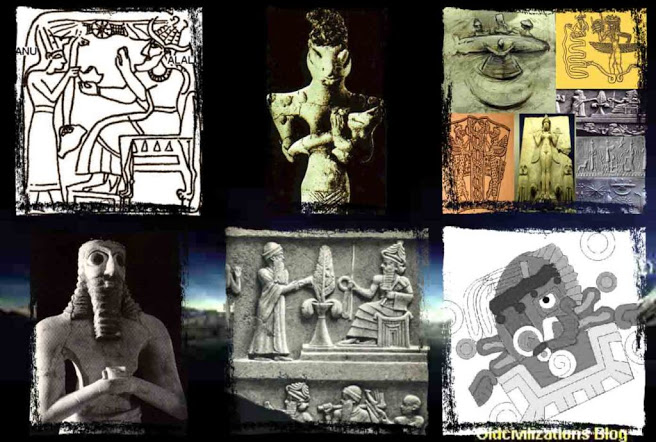
The dinosauroid concept arises from research on theropod dinosaurs such as Troodon and Saurornithoides. Given that these animals possessed the largest brain of the Mesozoic period, compared to their body size, some have speculated that had they not gone extinct, these animals would have had a chance of evolving into a human-like form. It should be noted that this concept has no scientific basis and was only developed within the speculative framework. Reptiloids are famous within conspiracy theories and among many scholars of the UFO phenomenon. The famous British astrophysicist, Fred Hoyle, in a press conference in London in 1971, said that the world was controlled by a force that could manifest itself in many forms. “They are everywhere – he told amazed journalists – in the sky, in the sea and on Earth”. He said that “they” controlled humanity through the mind. There were other alien races on earth, and still are, besides the alien race that the Sumerians called the Anunnaki and other ancient texts called the Serpent Race. It could well have been that some of the other groups went to war with these Anunnaki reptiloids. Ancient texts record these “wars of the gods” throughout the world and these could include conflicts between different alien races, as well as those described in the Sumerian Tablets, which seem to have involved different factions of the Anunnaki fighting each other. Currently there are accounts of people who claim to have seen humanoids whose skin and faces resembled those of reptiles, with large eyes. Jason Bishop III, a researcher of the extraterrestrial phenomenon, says that the reptiloids are much taller than humans and cold-blooded like the reptiles on Earth. They appear to be less emotionally sensitive than humans and most have great difficulty expressing love, although they are highly intelligent and possess highly advanced technology. This is a description applicable to the attitudes and behavior of the Babylonian Brotherhood, which controls Earth. Modern accounts of reptiloids fit the descriptions of many “gods” of the ancient world in the texts and legends that have come down to us today.
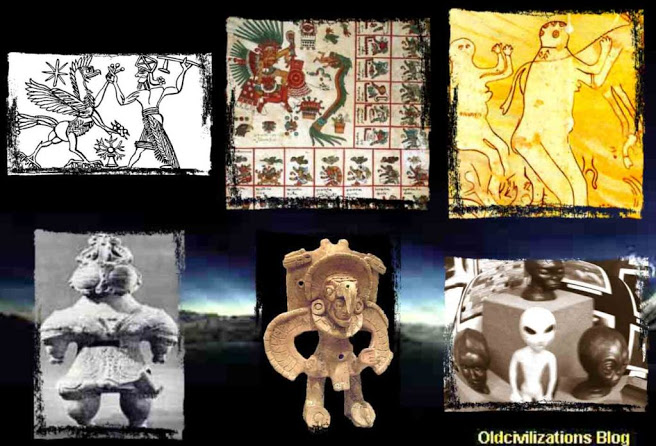
The Ubaid culture existed between 5,000 and 4,000 BC. C., even before the existence of Sumeria, in what is now Iraq. It was located in what is now Iraq and the statuettes of its gods are clear representations of reptilian humanoids. The Ubaid period is a prehistoric period of Mesopotamia. Ubaid, west of Ur in the vicinity of southern Iraq, has given its name to the prehistoric pottery culture, which represents the earliest settlement on the alluvial plain of southern Mesopotamia. The Ubaid culture began before 5300 BC. C. and lasted until the beginning of the Uruk period, around 4000 a. C. The Ubaid period is divided into three main phases. The first was Ubaid 1, sometimes called Eridu, a phase limited to the southern tip of Iraq, on what was then the Persian Gulf coast. This phase, which shows a clear connection with the Samarra culture to the north, saw the establishment of the first permanent settlement. Its inhabitants were pioneers in the cultivation of grains in the extreme conditions of aridity, thanks to the high water tables of southern Iraq. The second phase was Ubaid 2 which witnessed the development of extensive canal networks in major settlements. Irrigated agriculture, which appears to have developed first in Choga Mami, quickly spread elsewhere. They form the first collective effort and centralized coordination of work. The third phase of Ubaid occurred in the period between 4500 to 4000 BC, and saw a period of intense and rapid urbanization through the spread of the Ubaid culture to northern Mesopotamia, which replaced the Halaf culture. Remnants of the Ubaid culture also extend along the Arabian coastline, showing the growth of a trading system that stretched from the Mediterranean coast to Oman. The statuettes of their gods are clear representations of reptilian humanoids. An Ubaid statuette with a reptiloid embracing a baby can be seen. The region where the Ubaid-Sumerian cultures developed is essential to understand the Anunnaki theme. Ubaid figurines physically portray descriptions of “gods” that dominated many ancient societies. As we have already indicated, the Central American cultures had their winged serpent god, Quetzalcoatl; the Hopi Indians had the plumed serpent god, Baholinkonga, and American culture in general is awash with serpent imagery, including the mysterious serpent-shaped earthen mound in Ohio.
Hindus speak of the reptilian gods, the Nagas, who were a race of ‘demons’ in the legends of India and their name means “those who do not walk, but crawl”. The Egyptians had their serpent god, Kneph, and the pharaohs were often portrayed with serpents. The Phoenicians had Agathodemon, another serpent figure. Voodoo followers have a god they call Damballah Wedo, who is portrayed as a serpent. The Hebrews had Nakhustan, the serpent. An ancient British god, known as the Dragon, ruler of the world, was named Hu. And that’s probably where the term human comes from. The winged disk symbol of the Sumerians, which is found throughout the ancient world, was usually depicted with two serpents. The symbolism of the serpent and its association with ancient “gods” abounds throughout the world. John Bathhurst Deane in his book The Worship of the Serpent wrote that one of the five builders of Thebes in Egypt was named after the serpent god of the Phoenicians, Ophion. The first altar erected to the Cyclopes in Athens was for “Ops”, the serpent deity. The symbolic worship of the serpent was so common in Greece that Saint Justin Martyr accuses the Greeks of introducing it into the mysteries of all their gods. The idea of fire-breathing dragons and evil serpents appearing in legends and texts around the world could easily originate from the reptilian “gods” who operated openly thousands of years ago. These were the Serpent People of ancient texts, including the Bible, where the serpent is a recurring theme. Of course, the snake has been used to symbolize many things and not every reference will literally be a reptile. But many of them are. There is also a common theme of a sacred place being protected by a serpent or dragon. We have the serpent in the Garden of Eden and the serpent/dragon theme is worldwide. The Persians spoke of a region of bliss and delight called Heden, which was more beautiful than all the rest of the world. It was the original abode of the first men, they said, before they were tempted by the evil spirit, in the form of a serpent, to partake of the fruit of the forbidden tree. There is also the Banyon Tree, under which Krishna sat on a coiled serpent and bestowed spiritual knowledge on mankind.




